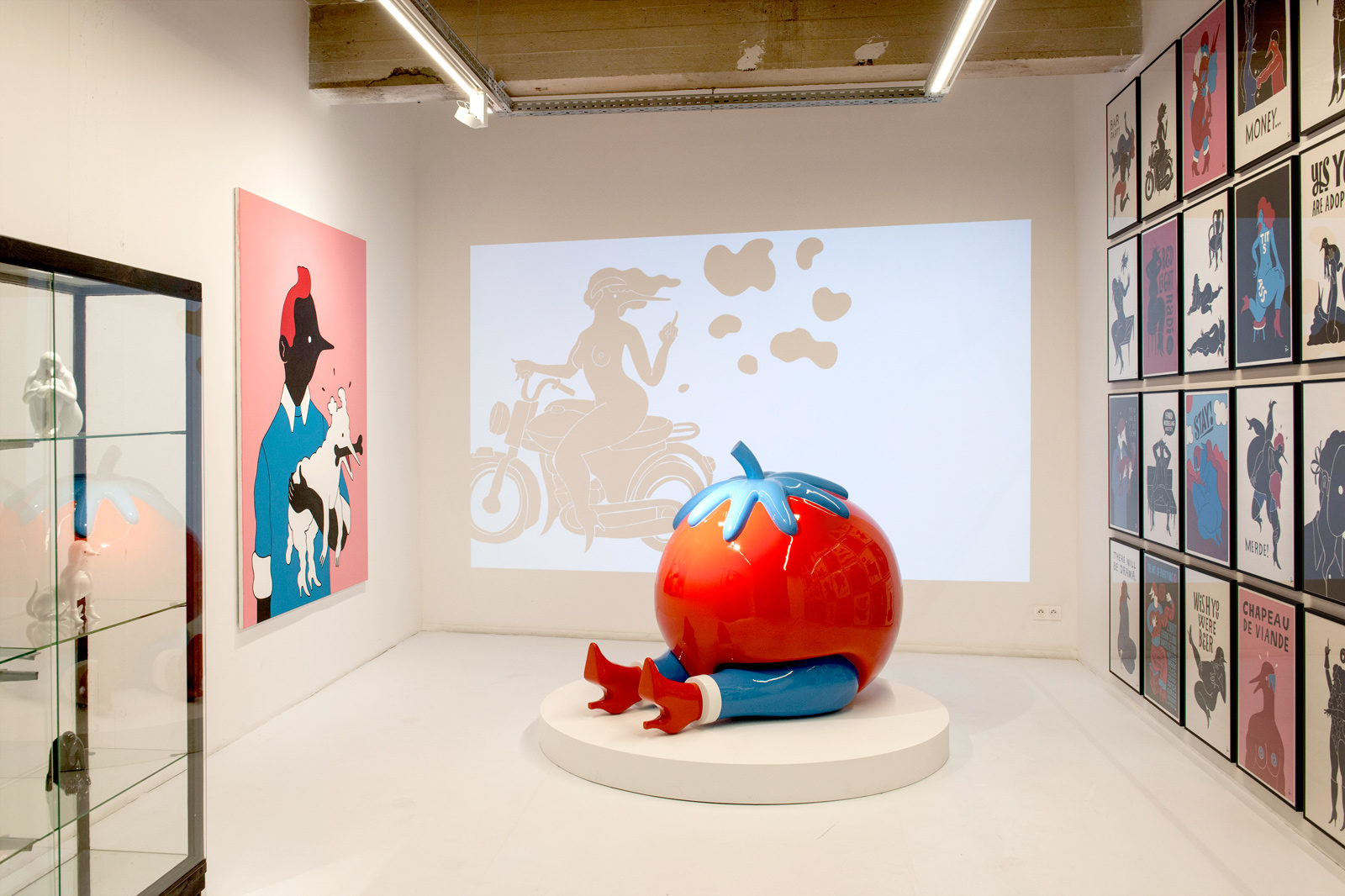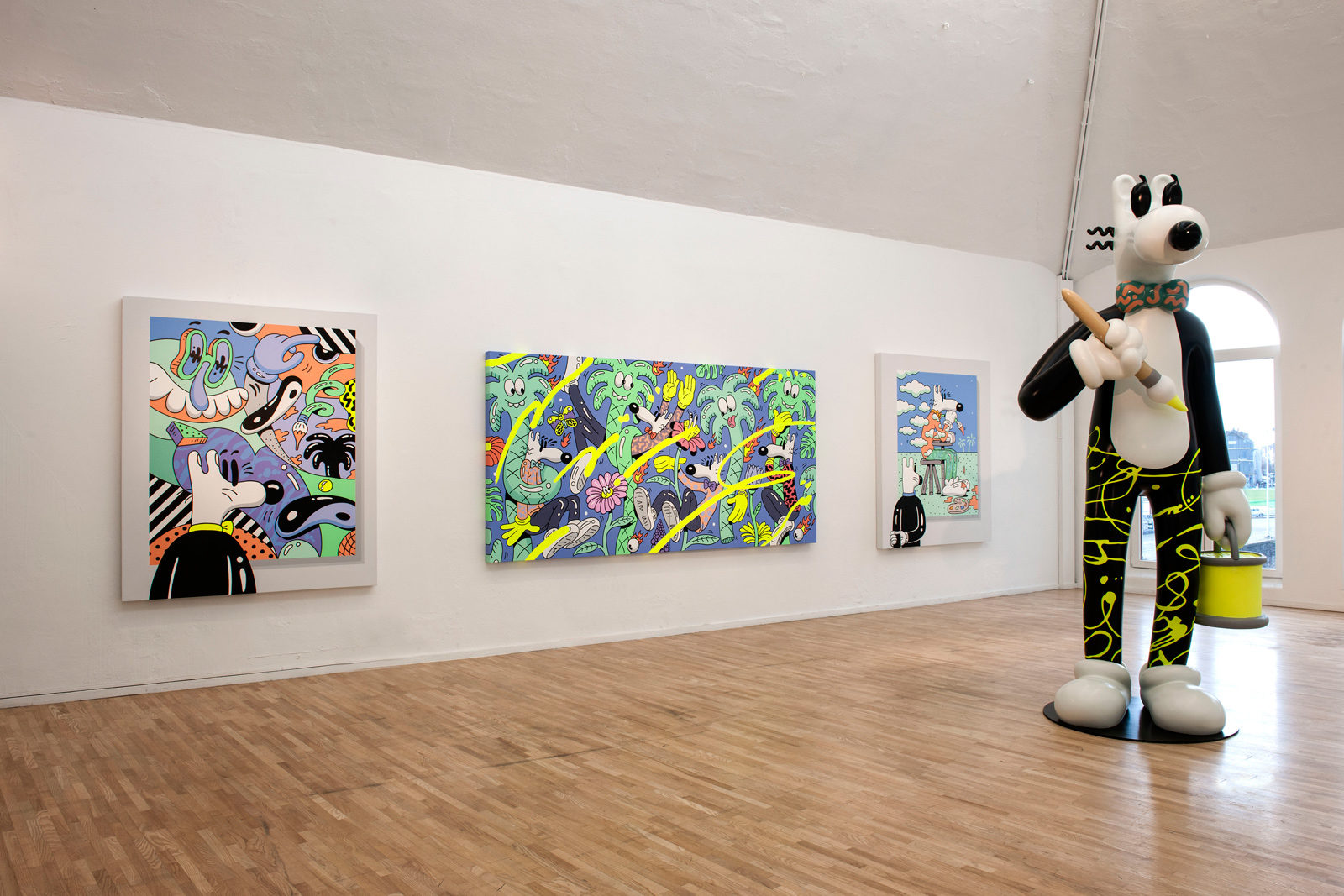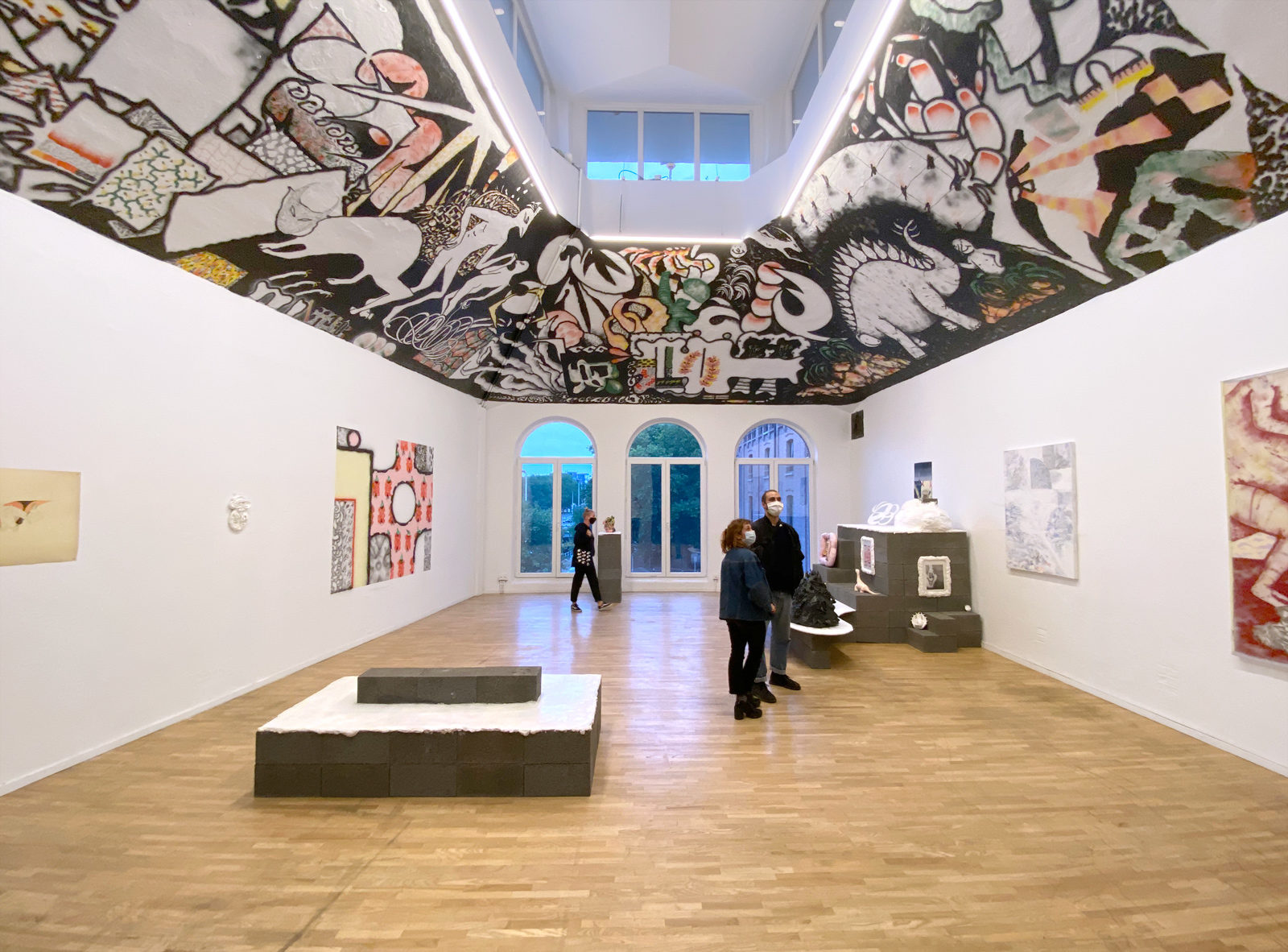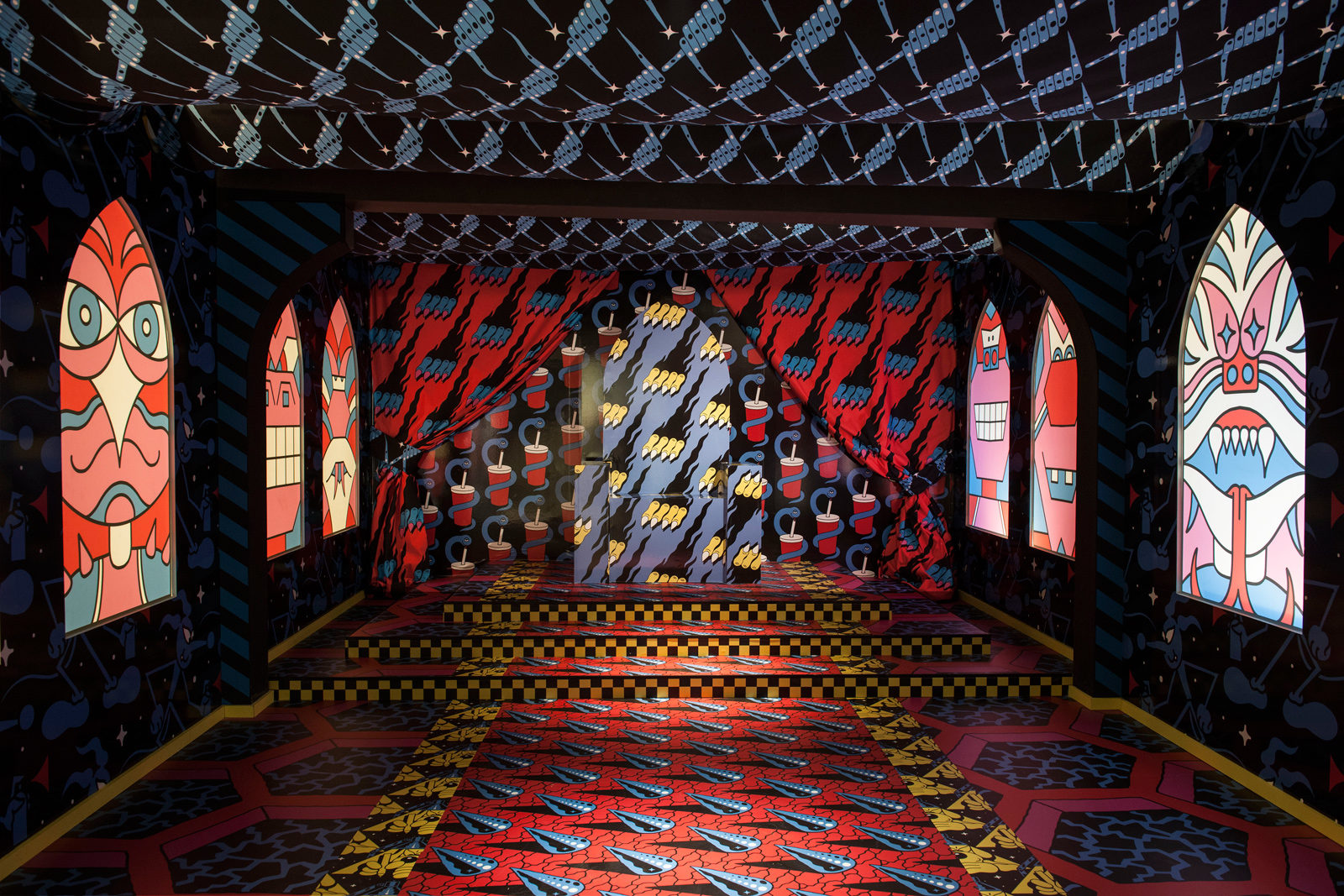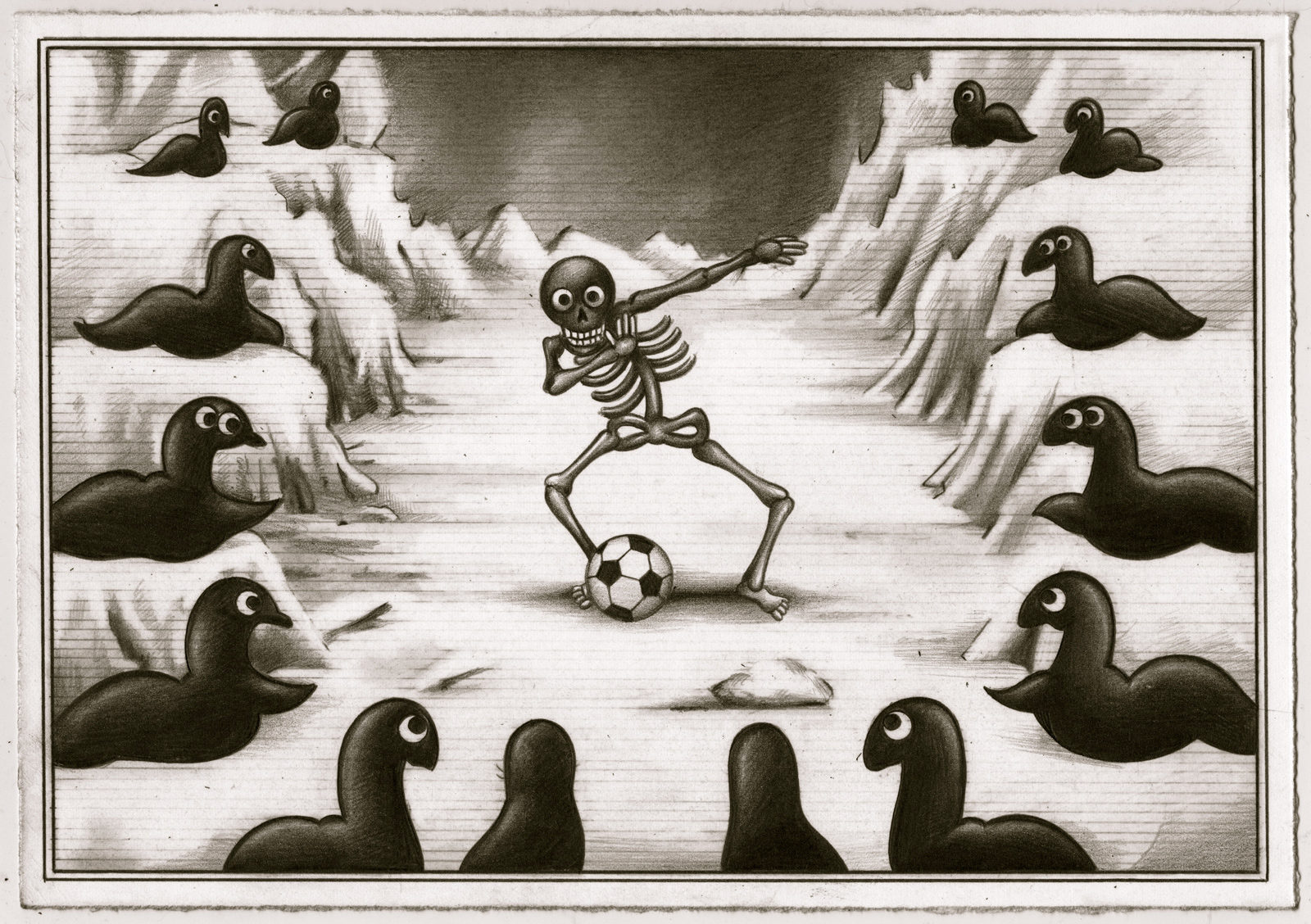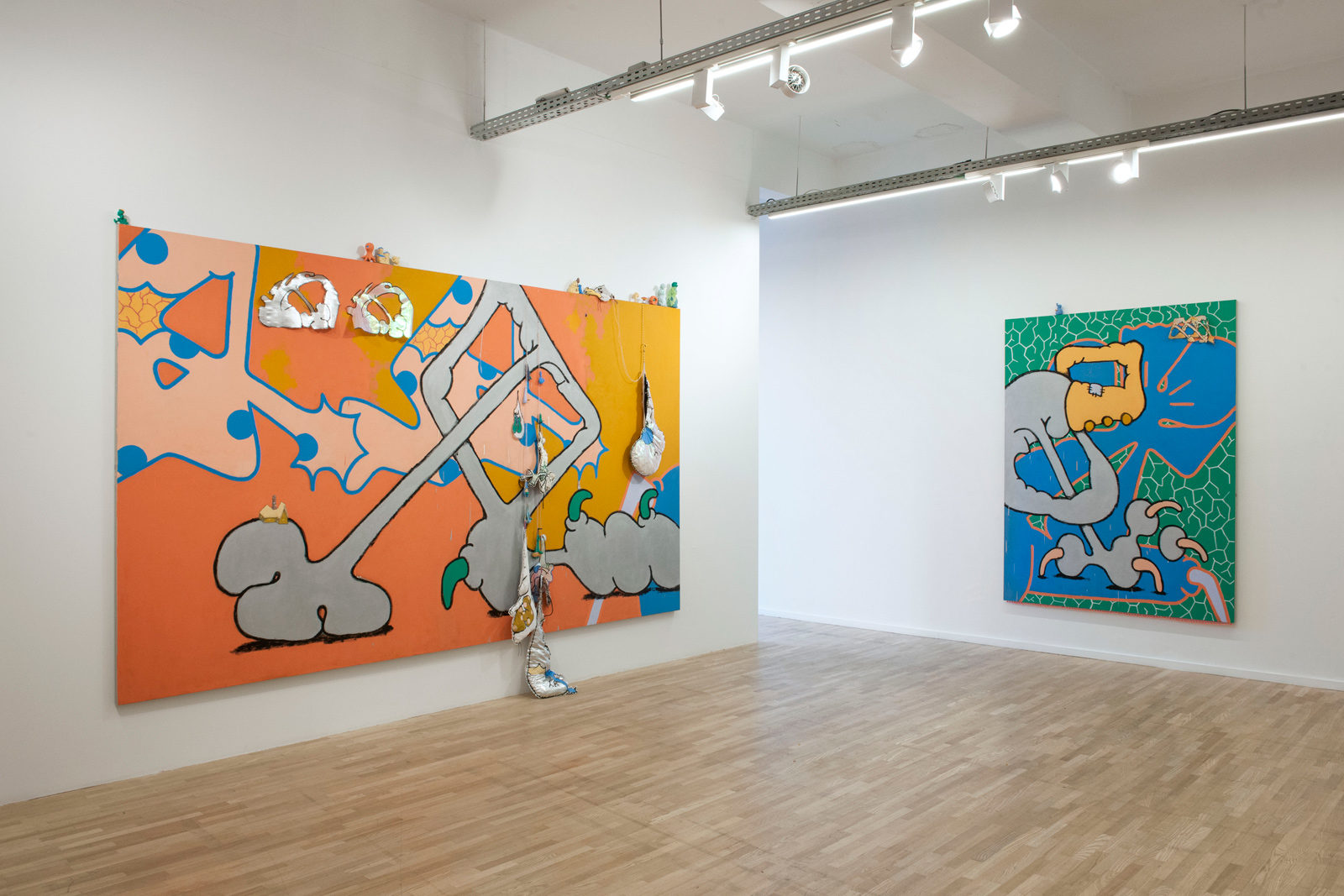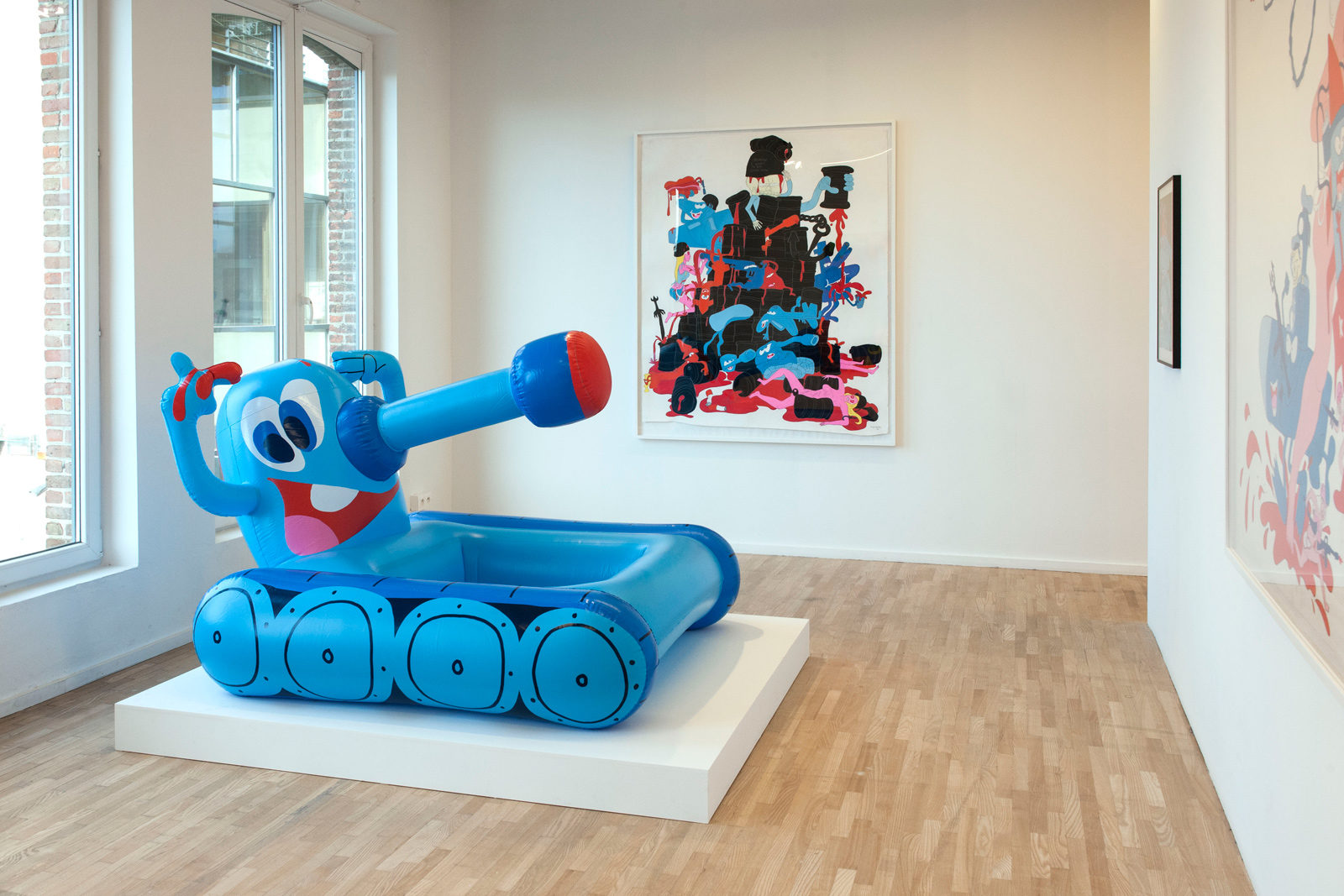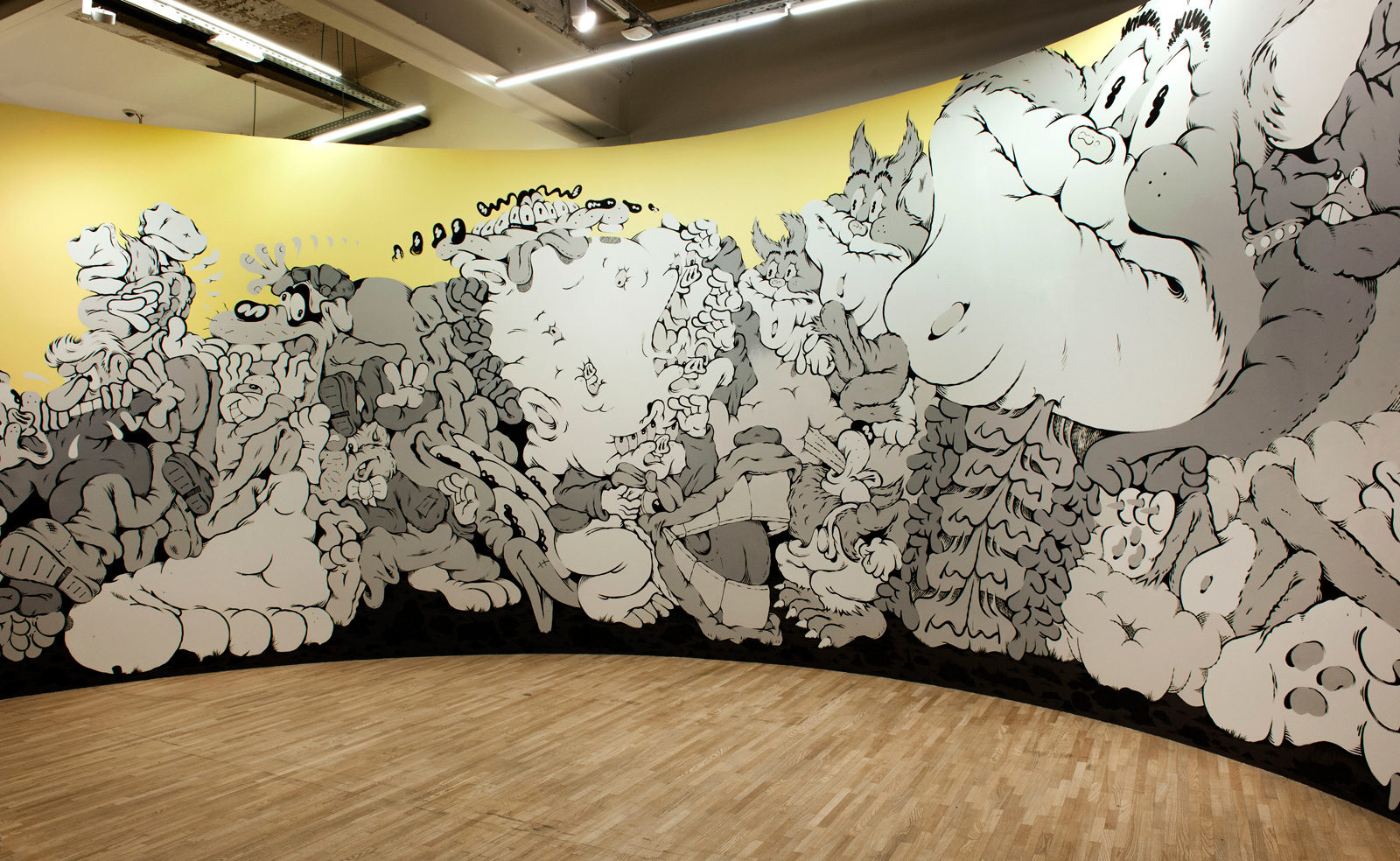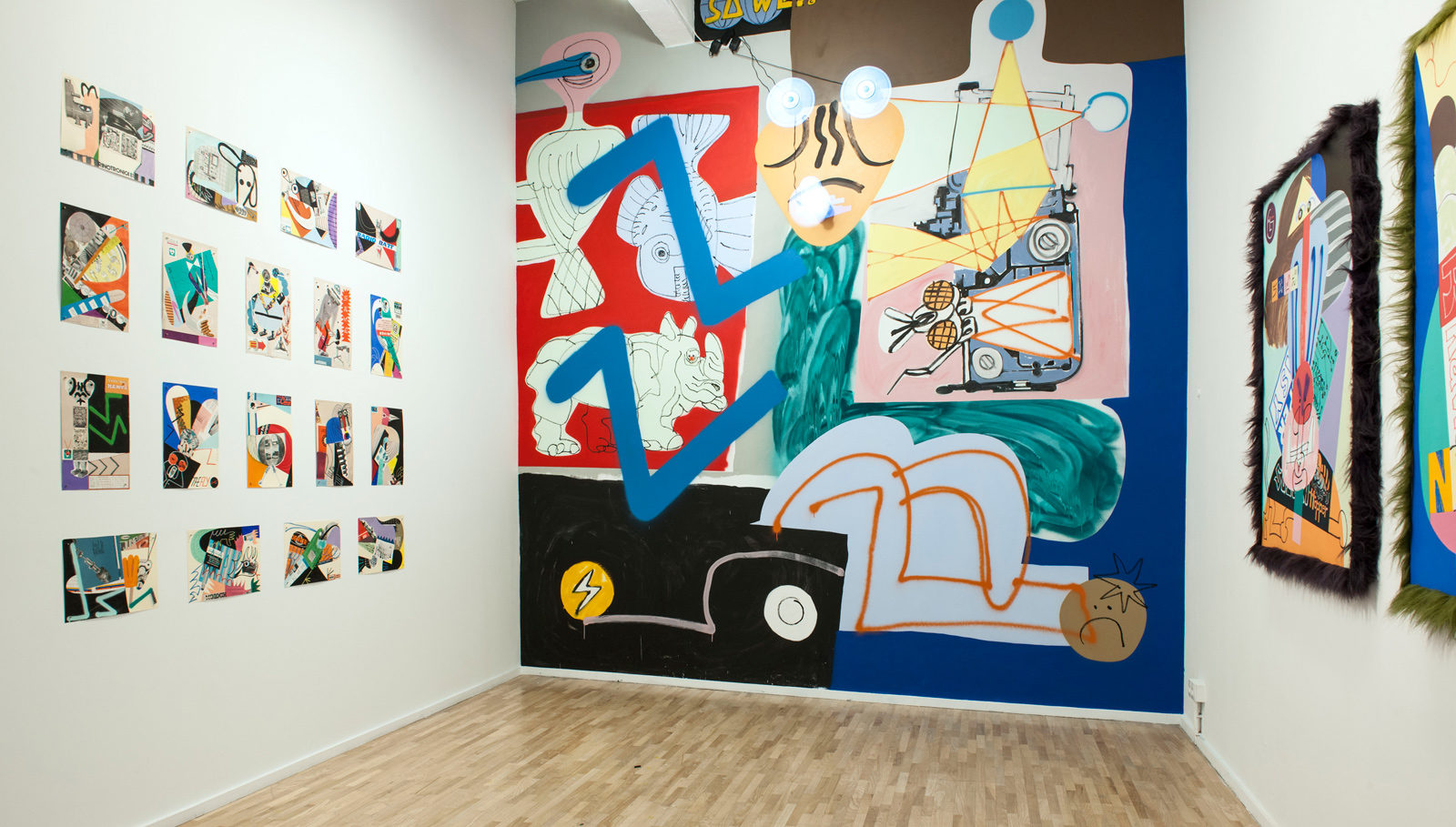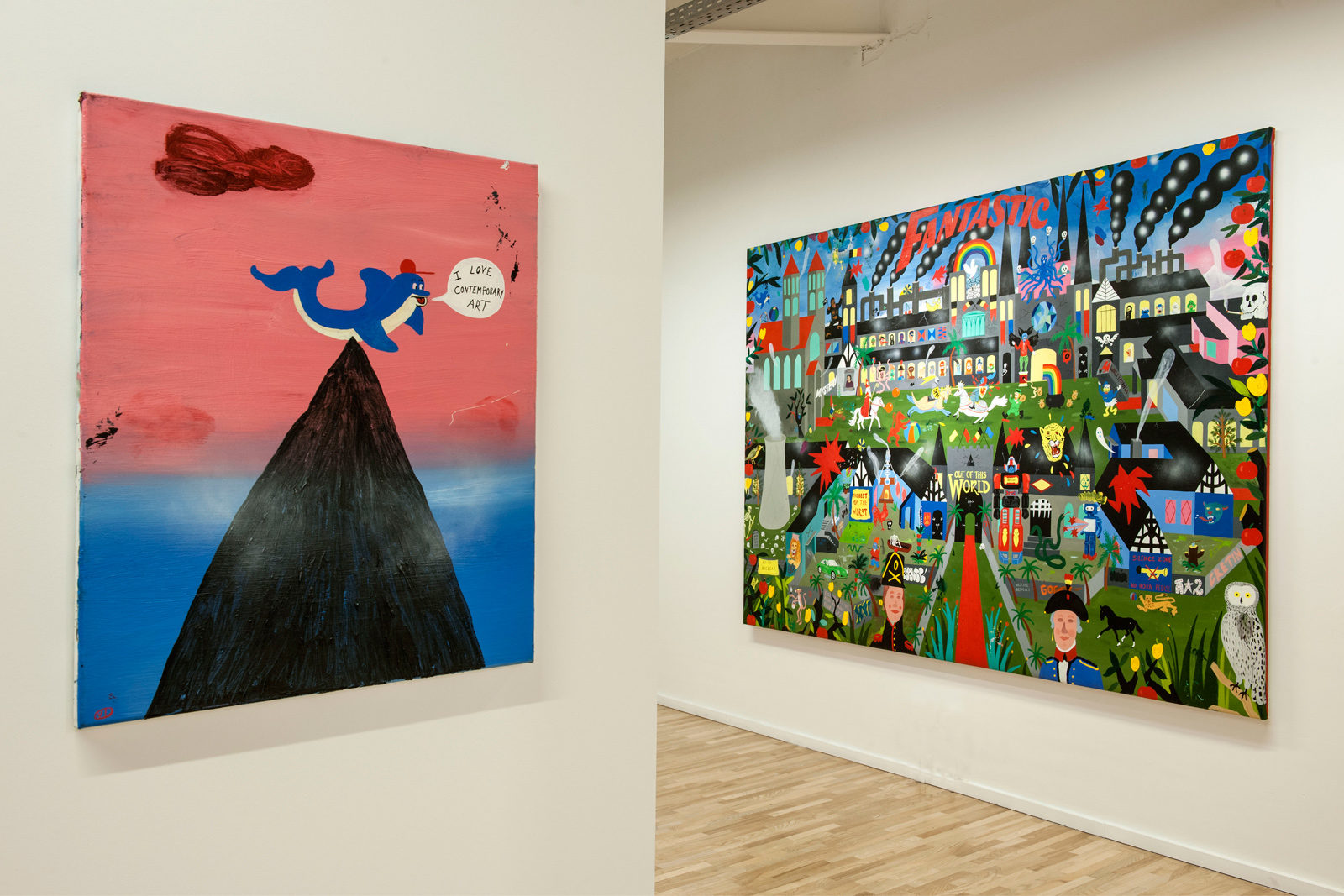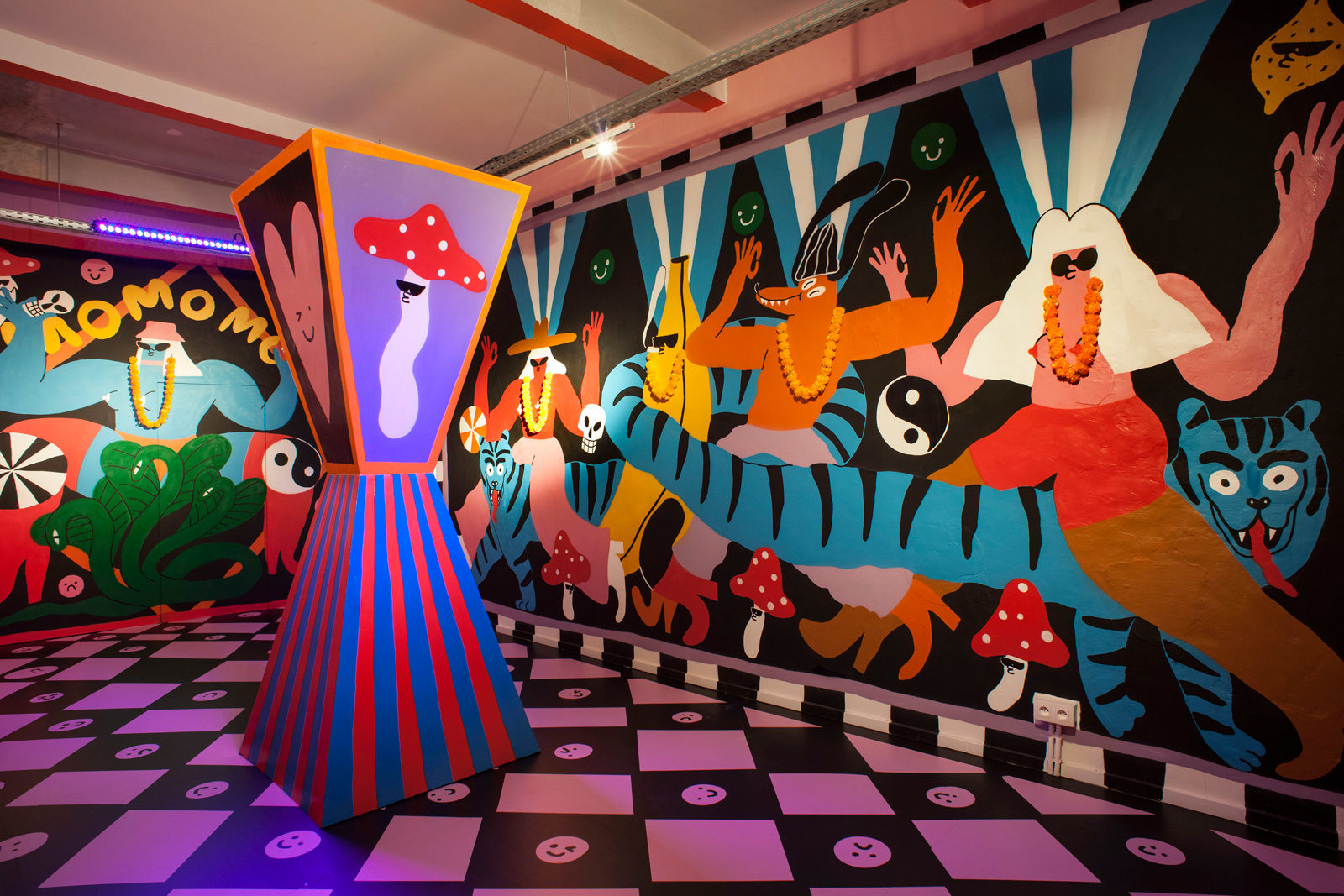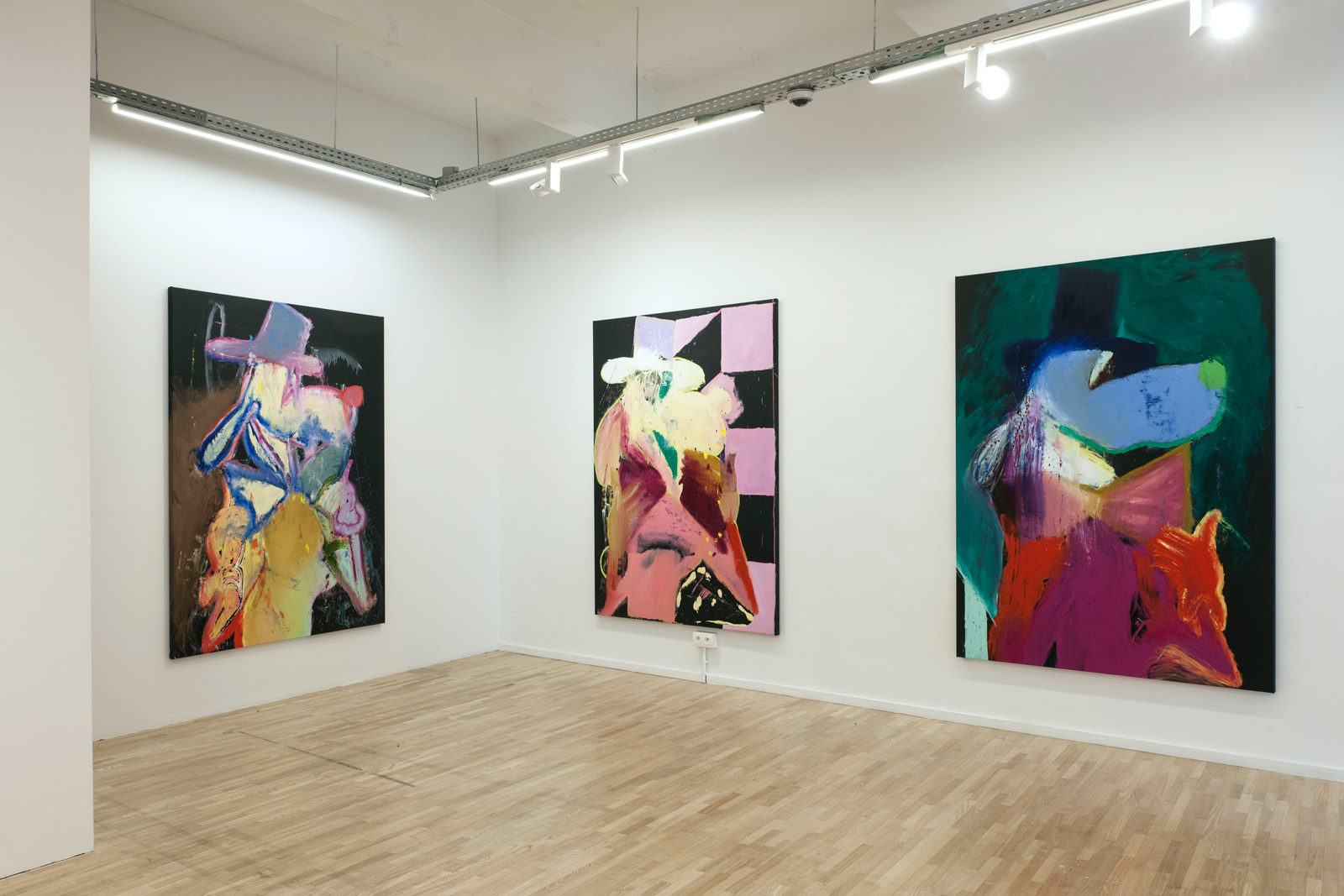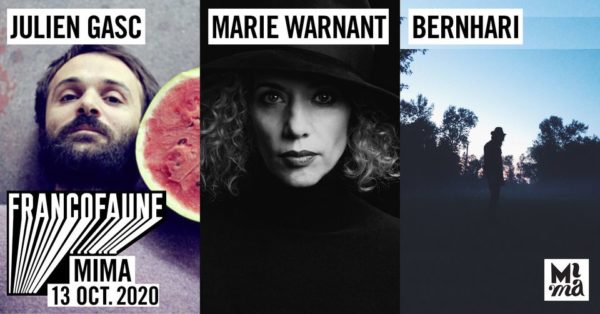ZOO
The artists
Parra (NL), Pablo Dalas (FR), Egle Zvirblyte (LTU), Todd James (US), Russell Maurice (UK), MARTÍ SAWE (ES), Ryan Travis Christian (US), Rhys Lee (AUS), Finsta (SW), Laurent Impeduglia (BE), Jérémy Bobel (FR), Guillaume Fluzin (FR), Robin Divrande (FR), Paul Follezou (FR), Félix Reuter (FR), Steven Harrington (US)
ZOO
Animals have been given human traits as far back as parietal art, a humanisation that gives us a glimpse into the beliefs and interests of the age. This art, known as anthropomorphic because it associates human behaviour and characteristics with an animal or object, draws its suggestive force from the stereotypes it conveys. Everyone knows that the ant is hardworking, the fox cunning and the eagle imperial. It is an archetype, as defined by C. G. Jung, that is to say, the universal structure resulting from the collective unconscious that appears in myths, tales and all imaginary productions. Anthropomorphism is a mirror of humanity in every age.
This intuitive mode of expression is the quality shared by all of the works exhibited. It is inherent to the work of these artists.
“In the past, this type of representation mainly made reference to gods and the ruling class. Then, during the 20th century, the ordinary citizen also became a target through the new mass media, such as the press, cinema, comics and advertising.
That is why ZOO covers the work of multidisciplinary artists who have very much bought into the anthropomorphism of their age, one that provides the costume for our everyday life and best describes us. Their talent is also expressed in fields such as fashion design, tattooing, graphic design, illustration or even animation. This mix of genres produces a body of work somewhere between pop culture and art that very much captures the zeitgeist.
Who is hiding under the feathers and fur of the animals in ZOO?
Over and beyond their quirkiness, the exhibited works are arresting due to their common sources of inspiration. The artists share a distinct taste for the visual heritage of the mass media. The style is at times reminiscent of the advertising mascot, at others of the cartoon, comic book or video game.
The pop twang of their aesthetics makes it familiar to us, although it is a genre relatively absent in the field of cultural institutions. By reinterpreting a language that is omnipresent in our environment, the artists hijack the associated imaginary world. Behind Ryan Travis Christian’s universe, inspired by the enchanted world of classic cartoons, lies a sharp critique of society; Finsta recreates the throne room of a pop kingdom rather than that of autocratic power; Marti Sawe denounces the anthropomorphic marketing of new technologies…
Regarded from a distance, all the beasts of ZOO seem as far from nature as we are. Hardly surprising, as here it is the human beast that is disguised as an animal. The humanity underneath the fur is superficial, hedonistic and completely disconnected from its environment, if not from its TV.
Curators
Alice van den Abeele and Raphaël Cruyt
Les artistes
Parra (NL), Pablo Dalas (FR), Egle Zvirblyte (LTU), Todd James (US), Russell Maurice (UK), MARTÍ SAWE (ES), Ryan Travis Christian (US), Rhys Lee (AUS), Finsta (SW), Laurent Impeduglia (BE), Jérémy Bobel (FR), Guillaume Fluzin (FR), Robin Divrande (FR), Paul Follezou (FR), Félix Reuter (FR), Steven Harrington (US)
ZOO
L’humanisation de l’animal existait déjà dans l’art pariétal. Elle nous dévoile toujours les croyances et les intérêts de son temps. Cet art, dit anthropomorphe parce qu’il associe à un animal ou un objet des comportements et des caractéristiques humains, tire sa force suggestive des stéréotypes qu’il charrie. Tout le monde sait que la fourmi est bosseuse, le renard rusé et l’aigle impérial. Il est un archétype comme le définit C. G. Jung, c’est-à-dire à la structure universelle issue de l’inconscient collectif qui apparaît dans les mythes, les contes et toutes les productions imaginaires. L’anthropomorphisme est un miroir de l’humanité à chaque époque. Ce mode d’expression intuitif est la qualité commune des travaux exposés.
Il est inscrit dans l’ADN du travail de ces artistes. Dans le passé, ce type de représentation concernait surtout les dieux et la classe dominante. Puis au cours du 20e siècle, la cible s’est étendue au citoyen lambda par le biais des nouveaux médias de masse, tels la presse, le cinéma, la BD et la publicité.
Pour cette raison, ZOO inclut des artistes pluridisciplinaires collant au plus près à l’anthropomorphisme de leur temps, celui qui habille notre quotidien et qui nous décrit le mieux. Les domaines où ceux-ci exercent également leur talent sont le stylisme, le taouage, le graphisme, l’illustration ou même l’animation. Ce mélange des genres produit un travail entre culture
pop et art qui respire l’air du temps.
QUI SE CACHE SOUS LES PLUMES ET LES POILS DES ANIMAUX DE ZOO ?
Au delà de leur singularité, les oeuvres exposées interpellent par leurs sources d’inspirations communes. Les artistes partagent un goût prononcé pour l’héritage visuel des mass media.
Ici le style rappelle la mascotte publicitaire, là le dessin animé, la BD ou le jeu vidéo. L’accent pop de leur esthétique la rend familière à nos yeux, bien qu’elle soit relativement absente dans le champ des institutions culturelles. En réinterprétant un langage omniprésent dans notre environnement, les artistes en détournent l’imaginaire associé. L’univers de Ryan Travis Christian, inspiré du monde enchanté du dessin animé classique, cache une critique acerbe de la société; Finsta une salle du trône d’un royaume pop plutôt que celui d’un pouvoir autocratique; Marti Sawe dénonce le marketing anthropomorphique des nouvelles technologies…
Vu de loin, toutes les bêtes de ZOO paraissent aussi éloignées de la nature que nous le sommes. Et pour cause, c’est la bête humaine qui se travestit en animal ici. L’humanité sous le poil est superficielle, plutôt hédoniste et complètement déconnectée de son environnement mais pas de sa télé.
Curateurs
Alice van den Abeele et Raphaël Cruyt
De kunstenaars
Parra (NL), Pablo Dalas (FR), Egle Zvirblyte (LTU), Todd James (US), Russell Maurice (UK), MARTÍ SAWE (ES), Ryan Travis Christian (US), Rhys Lee (AUS), Finsta (SW), Laurent Impeduglia (BE), Jérémy Bobel (FR), Guillaume Fluzin (FR), Robin Divrande (FR), Paul Follezou (FR), Félix Reuter (FR), Steven Harrington (US)
ZOO
Afbeeldingen van dieren met menselijke trekken bestaan al sinds de vroegste rotstekeningen. Telkens weer werpen ze een blik op de overtuigingen en interesses van een bepaalde periode. Deze kunst, die antropomorf wordt genoemd omdat aan een dier of object menselijke kenmerken en menselijk gedrag worden toegekend, haalt haar suggestieve vermogen uit haar stereotypering. Iedereen weet immers dat een mier een harde werkster is, een vos sluw en een arend majestueus. Het gaat om archetypes, om de universele structuur die volgens Carl Gustav Jung voortvloeit uit het collectieve onbewuste van de mythes, sprookjes en alle andere verzonnen creaties. Het antropomorfisme is in elke fase van de geschiedenis een spiegel van de mensheid.
Deze intuïtieve expressievorm vormt de rode draad doorheen de getoonde werken en zit verweven in het DNA van al deze kunstenaars.
In vroegere tijden werd antropomorfisme vooral gebruikt om de goden of de heersende klasse af te beelden. In de loop van de 20e eeuw breidde zich dat echter uit naar de man in de straat door de opkomst van nieuwe media, zoals de pers, film, stripverhalen en de reclame.
ZOO toont dan ook kunstenaars uit diverse domeinen die de vinger aan de pols hebben van het antropomorfisme van deze tijd, dat ons dagelijkse leven perfect weet te vatten. Ze zijn actief in disciplines die uiteenlopen van styling en tatoeage tot grafiek, illustraties en animaties. Deze smeltkroes van stijlen levert werken op die het midden houden tussen pop en kunst, maar volop de huidige tijdsgeest ademen.
Wie gaat er schuil achter de behaarde en gevederde personages van ZOO?
De getoonde werken zijn uniek, maar verrassen door hun gemeenschappelijke inspiratiebronnen. Elk van de kunstenaars heeft een uitgesproken voorliefde voor het visuele erfgoed van de mass media. We zien werken die doen denken aan reclamemascottes, aan animatiefilms, strips of videogames.
Door de poppy accenten voelt deze esthetiek heel vertrouwd aan, ook al is ze niet echt aanwezig in de klassieke culturele instellingen. Door een alomtegenwoordige taal anders te interpreteren geven de kunstenaars een nieuwe invulling aan de beeldenwereld die ermee samenhangt. Achter het op klassieke tekenfilms geïnspireerde universum van Ryan Travis Christian gaat een bijtende kritiek op onze maatschappij schuil, Finsta creëerde eerder een troon voor een popkoninkrijk dan voor een autocratisch heerser en Marti Sawe plaatst vraagtekens bij de antropomorfe marketing van de nieuwe technologieën.
Het lijkt wel of de wezens in ZOO net zo ver van de natuur afstaan als wijzelf. Logisch ook, want ze tonen niet meer dan verwrongen karikaturen van het mens-zijn. De mens die we te zien krijgen, is oppervlakkig en hedonistisch. Hij heeft geen band meer met de wereld om zich heen, maar enkel nog met zijn beeldschermen.
Artistieke leiding
Alice van den Abeele en Raphaël Cruyt
